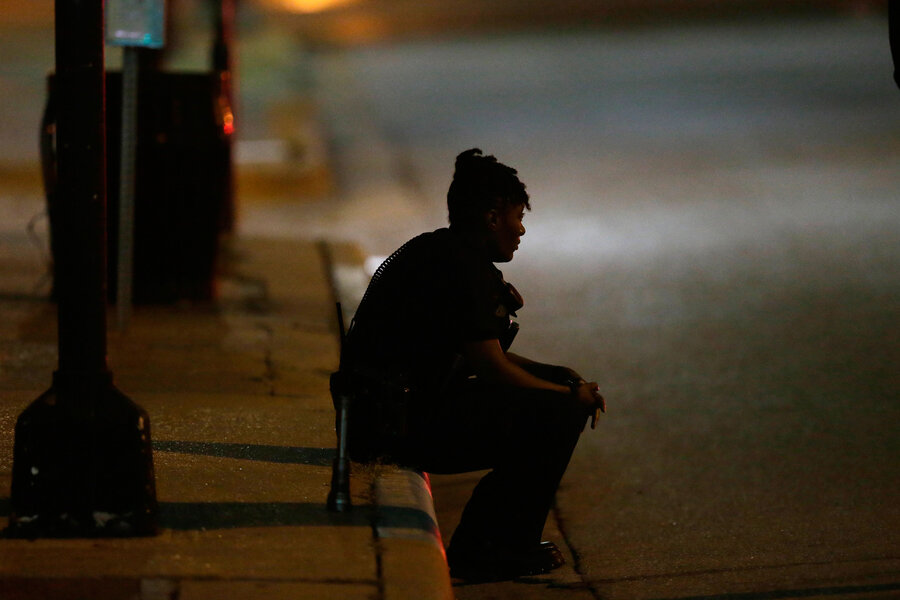In wake of Dallas ambush, police mourn deadliest day since 9/11
Loading...
A peaceful protest turned tragic in Dallas on Thursday night when a sniper shot 12 police officers, killing at least five and wounding seven.
Officials say the gunman voiced anger over the recent fatal shootings of African-American men by white police officers in Louisiana and Minnesota this week, the same reason behind the peaceful march. After a three-hour standoff with SWAT officers, police killed the shooter by detonating an explosive device.
“It is a heartbreaking morning,” said Dallas Mayor Mike Rawlings alongside Dallas Police Chief David Brown at a press conference Friday morning. “To say that our police officers put their lives on the line every day is no hyperbole. Ladies and gentlemen, it’s a reality.”
The shooting in Dallas Thursday evening was the deadliest incident for police officers in the United States since the terrorist attacks on 9/11, intensifying the nationwide unrest between police officers and citizens. And given the shooter’s motives and targets, Thursday night’s attack will likely support the cause of those hoping to officially list police ambushes as hate crimes.
“The suspect said he was upset at white people,” Chief Brown told reporters. “The suspect said he wanted to kill white people, especially white officers.”
The Federal Bureau of Investigation (FBI) defines hate crimes as a traditional offense, such as murder or vandalism, but “with an added element of bias.” Congress most recently extended hate crime protections to transgender and homosexual Americans in 2009.
However, the National Fraternal Order of Police (FOP) says the protection should be expanded yet again to include the country’s police officers.
“In the last few years, ambush attacks aimed to kill or injure law enforcement officers have risen dramatically,” FOP National President Chuck Canterbury said last September. “All of these officers died because of the uniforms they were wearing.”
And there has been an uptick in police officer ambushes in the last year. Between 2000 and 2015 there were an average of 10 officers killed per year, with recent statistics decreasing to roughly six deaths per year. But there were already five ambush killings of officers as of March this year.
Others say, however, that identifying police violence as a hate crime will do little to amend the animosity between the country’s often-dueling Black Lives Matter and Blue Lives Matter movements.
As Jeannie Bell, an Indiana University law professor who specializes in policing and hate crimes, told The Christian Science Monitor’s Patrik Jonsson last year:
... such laws are mostly used to call attention to low-level assaults and other behavior that might otherwise not get investigated or even prosecuted. Conversely, killing a police officer is a first-degree murder charge. Even in states without the death penalty a cop-killer could face death if prosecuted under federal law, Professor Bell says.
Indeed, the decision by grand juries not to indict the officers responsible for the deaths of Michael Brown in Ferguson, Mo., and Eric Gardner in New York has reinforced a sense among many Americans that police already enjoy institutional protections that an average citizen does not, Bell says.
But until more details on the shooter’s identity become available, leaders say the nation needs to stay focused on the legacy of the five fallen officers.
“Let me be clear: There is not possible justification for these kinds of attacks or any violence against law enforcement,” said President Obama in a statement from Warsaw, Poland Friday. “Today is a wrenching reminder of the sacrifices they make for us.”
“No words to describe the atrocity that happened to our city,” said Brown. “All I know is this must stop, this divisiveness between our police and our citizens.”








